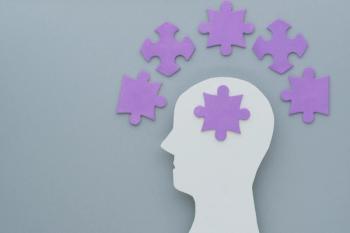
A More Nuanced View of Hypomania
Is dysphoric hypomania a phase of mania itself? Or does it represent a descent into a mixed state?
RESEARCH UPDATE
Hypomania is often characterized as a euphoric experience, a “mild version of mania.” For example, here’s
"It’s a less severe form of mania. It actually may feel pretty good because your mood is up and you have more energy than usual, but it’s not out of control. The problem is that for someone with bipolar disorder, hypomania can evolve into mania. Or it can switch to serious depression."
Or
"Characteristic behaviors are extremely energetic, talkative, and confident commonly exhibited with a flight of creative ideas."
Doesn’t that sound appealing? If hypomania was just mild mania, why wouldn’t people want to return to it? This way of thinking about hypomania reinforces some practitioners’ inclination to blame patients for being non-compliant: “they just want their highs.”
The problem is that pure euphoric hypomanias are, in my experience, rather uncommon. True, patients don’t come in to see us to complain of euphoric hypomania. But I don’t hear about this very often during their subsequent depressions. Patients more commonly go through a phase that is initially pleasurable; but later, perhaps driven by the decreased sleep that accompanies early hypomania, the experience can change into something much more dysphoric.
For example, a
For another rich example, see Sarah Sullivan’s blog on
Is dysphoric hypomania a phase of mania itself? Or does it represent a descent into a mixed state? Does this even matter? Patients’ accounts of the complexity of their mood experience, such as those above, make the DSM-5–induced
We can thank the DSM committee members for their efforts. But let’s not confuse the criteria with the complex reality of the illness.
Take irritability. While disallowed by the DSM-5 mixed state definition, this symptom is prominent in research studies that quantify symptoms during mixed states. For example, in the
Take insomnia. In dysphoric hypomania, this is not the classic “decreased need for sleep.” Patients would love some lorazepam or zolpidem. Indeed, they may be perceived by physicians as “drug-seeking,” which is utterly ironic if the same physician is prescribing an antidepressant that might be inducing these mixed state symptoms. Unfortunately, I think this is extremely common, based on the primary care psychiatric consults I’m doing these days.
Defining mixed states, including dysphoric hypomania, is less tortuous if one adopts a “dimensional” (jargon term for spectrum) approach to diagnosis-as recommended by the head of the Bipolar Spectrum Division of the National Institute of Mental Health.5 (Note the title of her division.) A dimensional view of mixed states regards depression as a continuum, from not at all mixed to fully mixed.6
But researchers prefer to use cutoffs. One of the
Does all this terminology matter?
Mixed states are extremely puzzling to patients-and some practitioners. The very term “bipolar” promotes the opposite conception: contrary “poles,” which as such could not possibly “mix.” One patient went 24 years without recognizing her bipolarity because of this terminology; she experienced a dramatic turnaround in course and understanding with
The bottom line
With the advent of the DSM-5, Bipolar II can finally be recognized as having mixed states (in the DSM-IV, only full mania and full depression counted). So now, dysphoric hypomania can be formally recognized. Perhaps this will help us all move beyond simplistic descriptions of hypomania that can leave patients and practitioners wondering if dysphoric, agitated states can be “bipolar.”
Disclosures:
Dr. Phelps is Director of the Mood Disorders Program at Samaritan Mental Health in Corvallis, Ore. He is the Bipolar Disorder Section Editor for Psychiatric Times. Dr. Phelps stopped accepting honoraria from pharmaceutical companies in 2008 but receives honoraria from McGraw-Hill and W.W. Norton & Co. for his books on bipolar disorders.
References:
1. John H, Sharma V.
2. Pope CJ, Xie B, Sharma V, Campbell MK.
3. Perugi G, Angst J, Azorin JM, et al; BRIDGE-II-Mix Study Group.
4. Malhi GS, Fritz K, Allwang C, et al.
5. Leibenluft E.
6. Phelps J.
7. Miller S, Suppes T, Mintz J, et al.
8. Saito-Tanji Y, Tsujimoto E, Taketani R, et al.
9. Phelps J, Manipod V.
Newsletter
Receive trusted psychiatric news, expert analysis, and clinical insights — subscribe today to support your practice and your patients.














